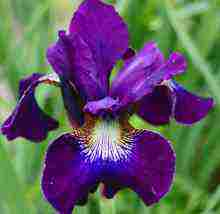Content
- 1 Soil and fertilizer requirements for planting
- 2 Lemon balm growing conditions, care rules
- 3 Lemon mint propagation methods
- 4 Growing lemon balm at home in pots
- 5 5 varieties for home cultivation
- 6 Mistakes when growing lemon balm
- 7 Answers to frequently asked questions
- 8 Plant features
- 9 Beneficial features
- 10 Features of varieties
- 11 Seed reproduction
- 12 Growing seedlings
- 13 Planting seedlings in open ground
- 14 Agricultural technology of sowing lemon balm seeds
- 15 Care of young plants
- 16 Breeding new lemon balm bushes
- 17 Melissa twins. What can be confused with
- 18 Choosing the right sort of lemon balm
- 19 How to use lemon balm
- 20 Lemon balm contraindications
- 21 Sowing technology
- 22 Growing at home
- 23 Care features
Melissa officinalis is the full botanical name of the plant. Popularly known by the names: lemon grass, lemon mint, bee mint, citronmelissa. It is not difficult to plant and propagate it if you know the structural features and preferences for growing conditions. We will tell in the article, growing lemon balm at home, how to plant, what care rules gardeners need to follow.

Growing lemon balm at home on a windowsill
Soil and fertilizer requirements for planting
Gardeners have long sown with seeds, propagated by dividing rhizomes and cuttings. The fragrant lemon balm was so fond of flower growers that they began to grow it as a houseplant in pots. Not surprising, because it is not only fragrant, but also useful. Its greatest advantage is essential oils.
Scientists claim that their number depends on the conditions in which it is grown. On poor soils - 0.02%, on rich - 0.8%, in some varieties - 0.14%. The difference is obvious. There is no doubt that to get the most out of a plant you need to take care of it. Vegetable soil for lemon balm is a soil mixture in which:
| Mechanical composition | Sandy loam or light loam |
| Acidity | Weakly acidic, close to neutral pH 5.8 - 6.5 |
| Humus content (presence of humus) | High (more than 4%) |
On sandy loams it dries quickly from lack of moisture and nutrients, on heavy wet loams it is affected by fungal infections and dies. Soils with high acidity require neutralization. Substances containing calcium cope with this task - slaked lime, chalk, crushed limestone, wood ash, crushed eggshells.
Tip # 1. Before fertilizing, you need to determine the pH level. This can be done using a special device.
To increase the pH level by one scale unit, 200 g of hydrated lime is required per 1 m2 of soil. To improve the aeration of heavy soils, coarse river sand is introduced to obtain light loam. For 1 m2 you need:
- medium loam - 21 kg;
- heavy loam - 43 kg;
- light clay - 75 kg;
- medium clay - 110 kg;
- heavy clay - 121 kg.
A proven popular method is the introduction of organic fertilizers at the rate of:
- Dry bird droppings are diluted with 400 g per 10 liters of water, applied to 1 m2.
- Rotted horse manure - 3 buckets per 1 m2.
- Compost - 3 kg per 1 m2.
Before planting, the applied fertilizers and sand are thoroughly mixed until a homogeneous mass to a depth of 25 - 30 cm. This is how the basic preparation of the culture medium takes place for several years to come. If you work in advance, then in subsequent years you will not have to fertilize, the supply of nutrients will last for a long time. Read also the article: → "Spicy herbs - we grow ourselves."
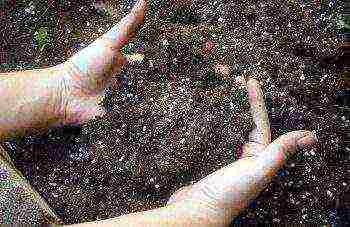
Preparing the soil for planting lemon balm seeds
Recently, methods of organic farming have become popular, using effective microorganisms. They can be purchased in the form of preparations "Emochki", "Shining", "Baikal", "Bokashi".
Lemon balm growing conditions, care rules
Live culture, when applied to the soil, increases fertility naturally, as in nature. The formation of humus takes 2 - 3 years on average. For example, "Bokashi" process plant residues into humus within 2 - 3 months, but only in the warm season. Microorganisms, like plants, "sleep" in the cold season and are activated in the spring, when the average daily temperature reaches + 120.
Place and conditions of lemon balm growing
Lemon grass is an unpretentious plant, it will survive in the shade and in the scorching sun. But with gentle lighting or in partial shade, it feels more comfortable. Will gratefully respond to generous watering, but not stagnant water. For one session of water procedures, one adult plant needs 10 - 20 liters of water, - 1 - 2 buckets.
Size, thickness and flavor vary with conditions. On poor soils, in the shade, the stems stretch out into "threads", 30 - 40 leaves are rare, the smell is weak. On rich soils, dense fragrant bushes reach 50 - 80 cm. Sometimes there are specimens of 100 - 120 cm. When the place for lemon balm is chosen, and the soil is prepared, you can start planting. Read also the article: → "Spicy herbs in the country."
Planting times are shown in the table:
| № | Breeding method | Landing dates |
| 1. | A plant with a lump | Mid April to October |
| 2. | Greenhouse seedlings | After the last spring frost. Fragile fragile stems are afraid of the cold; |
Features of planting in the soil
If the basic preparation of the soil has not been carried out, then it is necessary to provide fertile conditions for each plant individually. For this, the planting hole must be 2 times larger than the volume of the lump, this allows you to add rich soil. In the framework of traditional farming, mineral fertilizers are applied to the soil:
- superphosphate - 50 g per 1 m2;
- ammonium nitrate - 20 g per 1 m2;
- potassium salt - 20 g per 1 m2
Tip # 2. When planting, deepen the lump by 5 cm, this contributes to the regrowth of new roots.
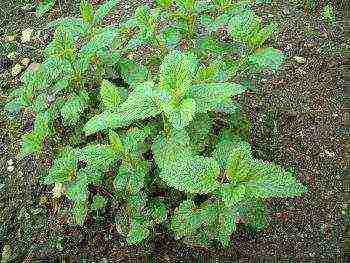
A common mistake is the thickened planting of seedlings in a permanent place of growth. Gardeners are confused by the size of the young plant. Melissa grows, on average, from 30 to 50 cm in diameter.
This is the distance at which plants are planted from each other, regardless of whether they are seedlings or with a lump. If bee mint is intended for medicinal and culinary purposes, it should be placed less often so that it is convenient to collect fragrant leaves. For a decorative effect, the planting is slightly thickened.
Lemon mint propagation methods
Gardeners use several methods to propagate this spicy herb:
- Seeds for seedlings.
- Seed in open ground.
- Green cuttings.
- By dividing the bush.
Planting seeds for seedlings
- sown in greenhouses or indoor conditions in the second decade of March in containers 7-10 cm high;
- into a ready-made seedling substrate that you can buy at your garden store. If this is not the case, you can cook it yourself. Add coarse river sand 1: 1 to "Universal soil pH 6.5".
- before sowing, mix small seeds with dry sand for even distribution;
- in the prepared soil using the length of the side of a pencil, push through grooves 1 cm deep;
- moisten gently with a fine spray;
- place the seeds evenly along the grooves and lightly press down;
- sprinkle with substrate and moisten with a spray bottle;
- cover with foil;
- keep in a well-lit, warm place with a temperature of 200.
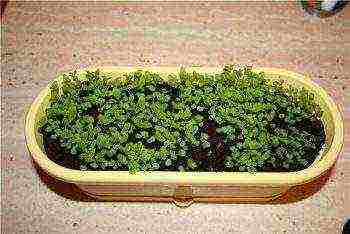
The first shoots will appear in three weeks. After another 10 - 15 days, the thickened crop can be dived.
Plant the seedlings in special cassettes for seedlings. They look like an egg holder. There are devices on sale in various shapes and sizes.One plant is placed in each cell. Before planting in the garden, a dense lump is formed, which can be easily removed. This method increases the survival rate of a young plant in comparison with traditional seedlings.
Seed in open ground
Sow when the threat of spring frost passes. Lemon balm grains are small, for even distribution they are mixed with sand (as for seedlings). The excavated soil is carefully loosened without leaving large lumps, it should be as sifted. The grooves are prepared shallow up to 1 cm, watered.
After waiting for the water to be absorbed, place the seeds, lightly press down and cover with loose soil. Watering must be done carefully so as not to wash. Lemon balm germination - 60%. The first shoots appear in 15 days, after 3 - 4 weeks everything will hatch. After another month, they can be thinned out. The distance between the remaining ones should not exceed 30 cm.
Propagation of grass by green cuttings
So lemongrass is propagated from early spring to late autumn. If you keep lemon balm in a pot in winter, like a houseplant, then the cuttings can be removed in March. Fragrant leaves and young stems are harvested during flowering, in June. At this time, lemon balm contains the most useful substances. New shoots grow over the summer, so they are an excellent planting material.
Features of this method:
- an shoot with 3-4 internodes is chosen for the cuttings;
- the lower leaves are cut off;
- the cutting is placed in water or in a seedling substrate;
- for survival in the ground, use "Kornevin" or "Heteroauxin";
- before planting, the tip of the cutting is powdered with a rooting agent;
- in wet soil, using a pencil, make a small depression of 2 - 3 cm, place the handle and squeeze slightly;
- The "greenhouse" is covered with plastic wrap.
After 10 days, you can determine which specimens survived, they are planted in a separate pot, the size of a disposable plastic cup. As it grows, the dishes will have to be increased to handle the plant.
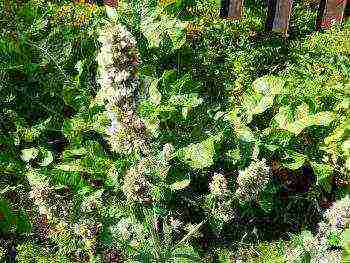
Lemon balm propagated in this way can be kept at home as a houseplant, and transplanted into the garden in the spring. There he will be more accustomed and will bring much more benefit.
In the open air, bee mint receives a lot of nutrients, grows well and delights its owners with a fragrant aroma for 10 years. During this time, it can be renewed vegetatively. Read also the article: → "Plants for an ornamental garden."
Dividing an adult bush into parts
In this way, lemon balm is best propagated in the spring. The rhizome is cut so that the cut remains 3 - 4 shoots or buds that have hatched... This "surgery" can be carried out in the fall. The resulting parts are planted in a permanent place with an interval of 30 - 50 cm. This method is more suitable for varietal plants that do not retain their decorative and healing properties during seed propagation.
Growing lemon balm at home in pots
Lemon balm lovers who do not have a summer cottage can enjoy the delicate aroma at home. Lemon mint is a garden plant, but feels great as an indoor plant. If he is on a light windowsill in a cozy, draft-free place, in fertile soil, he will respond to care with exuberant growth and fragrance.
Unpretentious in leaving:
- you need to water with settled water when the soil in the pot is dry and not petrified. You need to moisten generously until water appears in the pan, then this procedure will have to be repeated less often;
- it is better to feed it with Emochki or other "effective microorganisms", they are absolutely harmless to plants and humans.
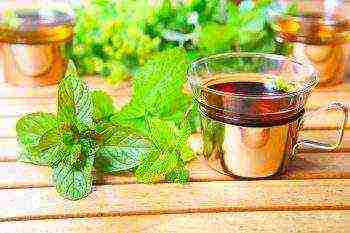
Unfortunately, the aroma of homemade lemon balm is inferior to its garden relative, but it is still pleasant to enjoy the fresh taste and smell on cold winter evenings.
5 varieties for home cultivation
Melissa officinalis has been known to mankind for 2000 years. All this time it has been successfully used in medicine and cooking. In favorable conditions, it grows up to 1 m in height.Breeders have worked hard on undersized varieties so that lemon mint delights year-round not only with its aroma, but also with an attractive appearance. Gardeners call such plants decorative deciduous. The following varieties are popular for indoor floriculture:
- «Pure gold ", the variety got its name for its exceptional" complaisance "in care and unusual effect. The compact shrub changes shades from white at the beginning of flowering to blue at the end.
- "Lemon tea" is appreciated for its original aroma, which successfully replaces real citrus.
- "Mahito" is bred for culinary purposes, it is not used for drinks and meat dishes.
- "Lemon aroma" is a relatively small plant, suitable for home and garden.
- "Variegated" - the most decorative lemon balm, has a golden color along the edge of the leaf, looks like blooming.
It looks interesting when several varieties are placed on one windowsill. It is easy to take care of them, water them in time and feed them seasonally with fertilizers for indoor decorative deciduous plants.
Mistakes when growing lemon balm
Sometimes gardeners complain that they cannot breed bee mint in their area. Melissa is not a picky plant, but her patience has a limit. You should not expect a good result if she:
- in the sun or in thick shade;
- suffers from drought on poor soil;
- suffocates on wet soil;
- drowned out by weeds;
- blown through in a draft;
- freezes in winter.
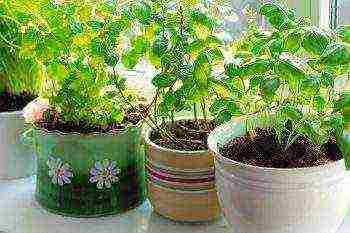
Barring Spartan conditions and choosing a cozy spot with fertile soil and ample watering, she will respond with a generous harvest of useful leaves.
Answers to frequently asked questions
Question №1. Where to get lemon balm?
Purchase a finished plant from a garden center that sells perennials. Advantage:
- guarantee of quality and "health" of the sold copy;
- 100% survival rate, thanks to whom the soil with which it is sold.
Buy seedlings. Advantage:
- the price is less than that of an adult plant;
- can be planted in open ground immediately after purchase.
Sow with seeds. Advantage:
- minimum financial costs;
- the ability to sow, both in open ground and in indoor pots.
Question number 2. What about watering lemon balm if I don't visit the country often?
The best solution is automatic watering, but not everyone can afford the equipment due to the high cost. You can keep moisture for a long time after regular irrigation if you sprinkle mulch around the plants in a layer of 5-10 cm. Mowed grass, wood chips, bark, crushed dry cow dung are good. All this creates protection against evaporation and serves as a slow acting fertilizer (MLF).
Question number 3. When to harvest lemon balm?
Best of all during flowering, then it contains the most essential oils, but it is possible all year round if you take lemon balm from the garden for the winter.
Question number 4. What plants are lemon balm combined with?
Most often it is planted together with spicy herbs mint, lovage, hyssop, tarragon. In decorative floriculture, they are used in mixborders with flowering perennials lupine, catchment, rudbeckia, coreopsis, daisy and other large plants.
Question number 5. Do I need to cover lemon balm for the winter?
Melissa is winter-hardy, but in cold winters you need to protect it with agrofibre, sawdust, and cut grass. Leaves of oak, walnut, hornbeam, poplar are not suitable for this purpose, they contain tannins and inhibit plants.
Rate the quality of the article. We want to be better for you:
Melisa has a delicate, unobtrusive, pleasant aroma. She, like mint, has been popular with gardeners all over the world for many centuries. Already from the very name of the plant, one can judge its magnificence, because melissa was named after the exquisite ancient Greek nymph - Melissa.
Melissa is a wonderful herb, which is a real boon for a culinary specialist. Due to its aroma, the plant is used to prepare various dishes.In lemon balm, honey and mint aromas are intertwined with a thin thread, ideally complementing salads, compotes, desserts.
You can grow lemon balm on your own plot and even in pots on the windowsill. According to professional summer residents, there is nothing easier than growing lemon balm at home. 
Plant features
Melissa is a perennial herb up to 80 cm high. The plant, depending on the variety, has leaves from green to silver color, can have different shapes. It should be noted that the leaves of lemon balm, regardless of the variety, are "pubescent" with slightly noticeable villi. The plant has a well-branched root. It blooms with small fragrant flowers of white, pink or purple color. This exotic herb is capable of setting fruits - leave the color until fully ripe and brown berries will necessarily form in its place.
At the first breath, the leaves crumpled in the hands resemble a lemon sound. But the more you enjoy the aroma of culture, the more multifaceted the aroma becomes.
Melissa, which has been popular in recent years, is a spicy crop prized for its aroma. It tastes bitter.
Beneficial features
The fragrant plant not only has a unique scent, but it is also very useful. The delicate leaves of the plant contain large amounts of vitamin C, essential for the immune system, and essential oils.
Due to its composition, the plant has always been popular not only in cooking, but also in medicine and cosmetology. Tea or a tincture of lemon balm will help get rid of poor appetite, insomnia, eliminate headaches, relieve stress, and eliminate depression.
Melissa retains its medicinal and culinary properties for a long time. Even after 24 months, dried lemon balm herb will still be fragrant and healthy. 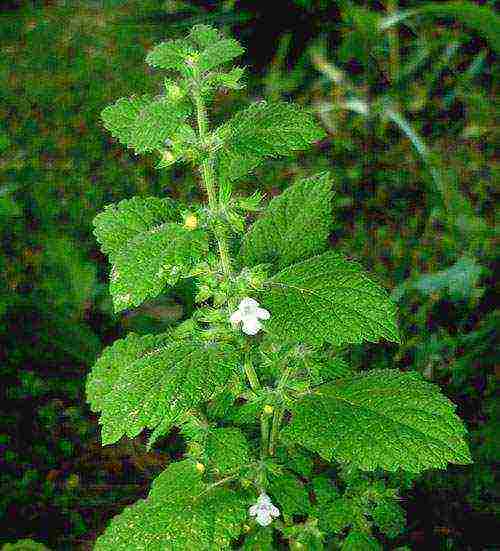
Features of varieties
Melissa is a popular aromatic herb. Today, many varieties have been bred, but the most favorite among summer residents are lemon, lime, erect, pearl.
Breeders have also developed decorative varieties. For example, the Pure Gold variety has yellow leaves. In the sun, they play with rays, shimmer and shine. Such plants are used to create flower beds and rockeries. It is not suitable for use in food or for the preparation of medicinal tinctures.
The variegated variety has a rich aroma. The plant is easy to care for and can even be grown in flowerpots on the windowsill. Variegated Melissa has small leaves with a rich green color.
In European countries, lemon balm is grown on a field scale. It has become an irreplaceable spice. In our country, lemon balm is grown only for our own needs. If you have not yet settled lemon balm in your summer cottage, be sure to do it. Just a few leaves of a fragrant plant can add a special feature to a familiar dish.
Seed reproduction
The easiest and most affordable way to grow this herb in a summer cottage is by seed reproduction. The seeds can be harvested from an adult bush or purchased from a specialized store. Melissa, growing from seeds of which allows you to enjoy freshness throughout the warm period, is not demanding on soil, moisture, tolerates low temperatures perfectly.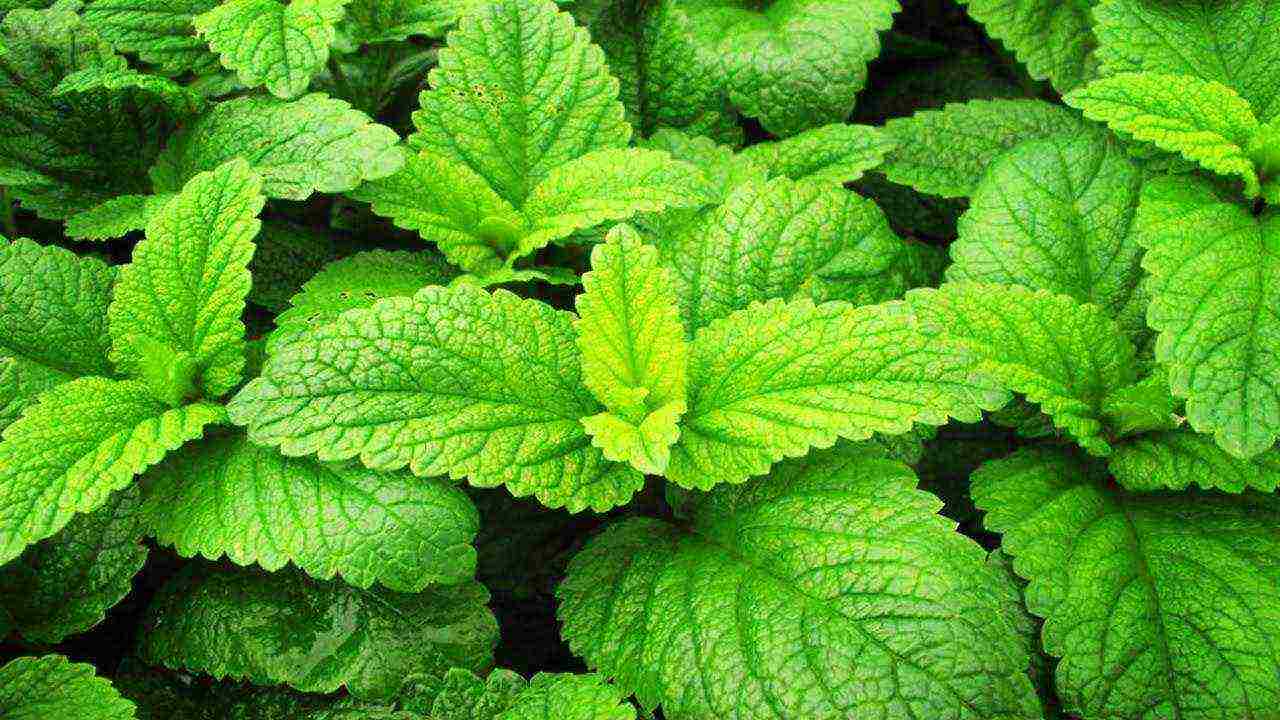 The plant is not afraid of frost and feels great even at high subzero temperatures. That is why you can sow seeds at any convenient time - even in the fall. There are no clear restrictions on sowing aromatic herb seeds. Seeds can be germinated in spring, summer and even late fall.
The plant is not afraid of frost and feels great even at high subzero temperatures. That is why you can sow seeds at any convenient time - even in the fall. There are no clear restrictions on sowing aromatic herb seeds. Seeds can be germinated in spring, summer and even late fall.
Sowing rules for lemon balm seeds:
- Grows in luxurious bushes. Therefore, it requires enough space for full development. When planting seeds in rows, it is necessary to provide a row spacing of at least 30 cm.
- Sow at the rate of 2 g dry seeds per m2.
- The seeds do not need to be deeply buried. They are sown to a depth of no more than 2 cm.
- The seeds are durable.Even after 3 years of storage, they will give friendly and uniform shoots.
- Dry seeds are sown in open ground. They do it in the spring. For summer planting, it is recommended to use seedlings.
Lemon balm seeds are very small, and seedlings do not differ in abundance at the first stage of growth. That is why professionals recommend mixing lemon balm seeds with other crops, for example, with salad or radish. The seeds are mixed 2: 1 - for 2 parts of an additional culture, 1 part of lemon balm. This approach will allow you not to lose seedlings. Until the culture rises and grows to a noticeable size, the radish or salad can already be eaten.
In the first year of growth, young plants bloom but do not set seeds. A scented crop takes time to gain strength and form a mature shrub, ready to seed. Melissa, a simple cultivation and easy care of which allows you to enjoy aromatic tea, gives a full harvest only in the second year of growth.
The best option for planting lemon balm from seeds is growing seedlings. 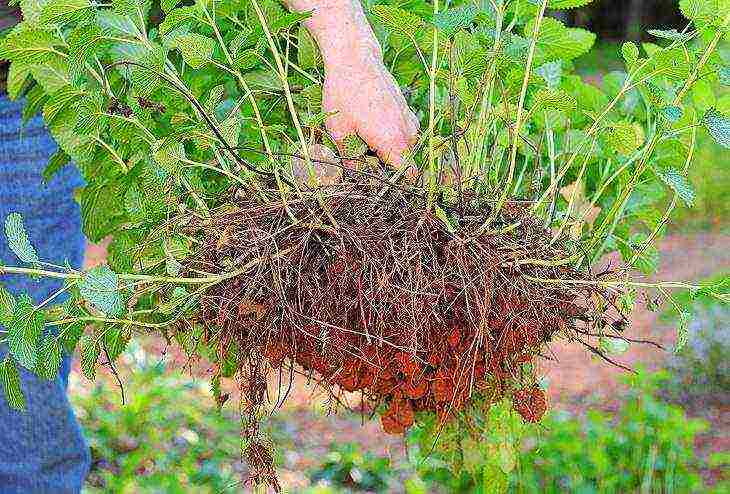
Growing seedlings
- At the end of March, containers are prepared for growing seedlings. Ready-made cassettes that can be purchased in a specialized store, wooden containers are suitable.
- In the presence of a greenhouse, the seeds of the aromatic plant are sown directly into closed soil.
- Lemon balm seeds do not need deep planting. For seedling growing indoors, the seeds must be sprinkled with soil only 5 mm: the seedlings will be friendly and uniform.
- After the emergence of young shoots, it is recommended to thin out the plants. The ideal distance between plants is 5 cm. Fragrant grass is not dived.
- Young seedlings are very sensitive to light. That is why, when the first sprouts appear, the plants are transferred to sunny windowsills. Also, many summer residents supplement melissa with artificial lighting.
- Melissa prefers fertile, light soil. It is recommended to add nitrogen fertilizer during the preparation of the substrate. Also, many professionals use peat pots for growing seedlings.
- 40 days after sowing, lemon balm must be relocated to a permanent place of growth - in open ground. If you will be growing lemon balm in a pot, you need to take care of a spacious container.
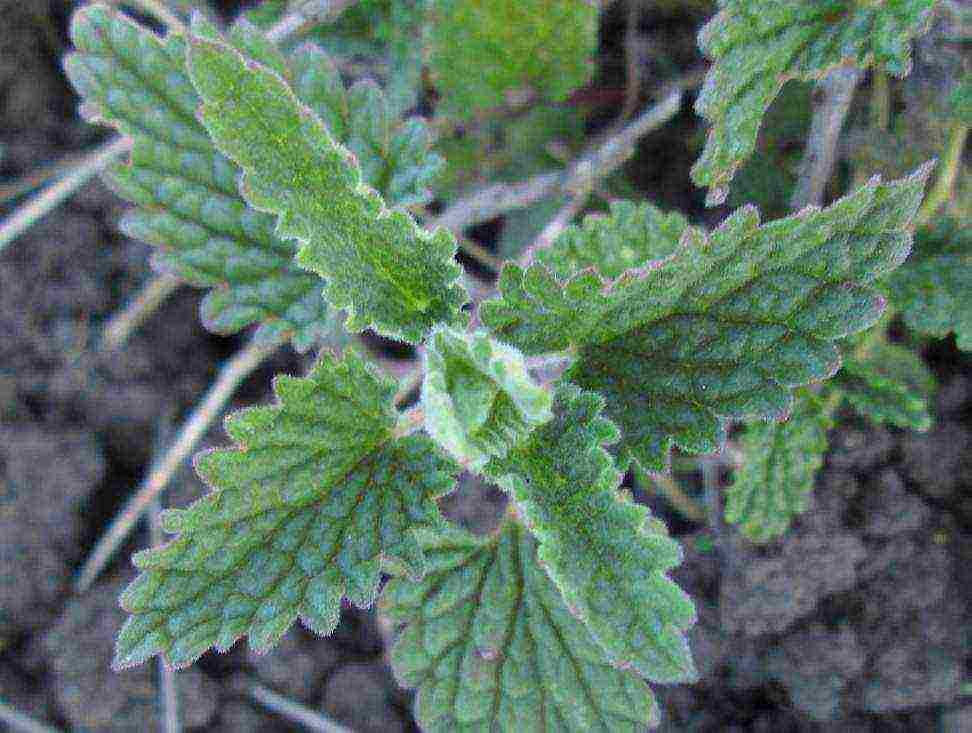
Planting seedlings in open ground
Melissa is demanding on the spot. To plant a plant, you need to choose a space under the tree. But the place should not be dark, direct sunlight can also have a detrimental effect on the plant. The aromatic culture feels perfect in partial shade.
The soil for planting seedlings is prepared in advance. Melissa prefers slightly acidic sandy loam soil.
Preparation of a place for planting lemon balm seedlings:
- In the fall, a garden bed is dug under lemon balm, weeds and unnecessary roots are selected.
- Mineral fertilizers, rotted manure are applied.
- In the event that the soil is acidic on the site, the place for seedlings is drained with bricks or fine gravel. Acidic soil contributes to the formation of root rot - the plant sooner or later dies.
- Melissa loves the high ground. That is why the grass bed is made high.
Clay soil should be diluted with sand.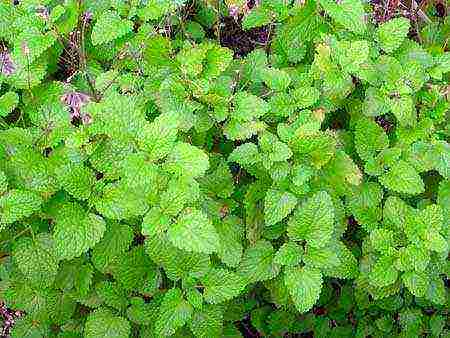 In the spring, the prepared bed should be cleared of weeds. Can be weeded by fluffing up the soil after winter rest. Mark the rows at least 30 cm apart. The ideal row spacing is 45 cm. Seedlings are planted in one or two rows in a checkerboard pattern. The distance between the plants should be 40 cm. If there is no need to save the planting space, the distance between the plants increases to 60 cm. In such “chic” conditions, lemon balm will be able to reveal all its advantages. Having room to grow will allow a strong and branched bush to form.
In the spring, the prepared bed should be cleared of weeds. Can be weeded by fluffing up the soil after winter rest. Mark the rows at least 30 cm apart. The ideal row spacing is 45 cm. Seedlings are planted in one or two rows in a checkerboard pattern. The distance between the plants should be 40 cm. If there is no need to save the planting space, the distance between the plants increases to 60 cm. In such “chic” conditions, lemon balm will be able to reveal all its advantages. Having room to grow will allow a strong and branched bush to form.
The aroma of lemon balm is most intense and refined until the moment of flowering.That is why it is harvested before the formation of peduncles, trying to get the most refined smell. ...
Agricultural technology of sowing lemon balm seeds
Although breeding with lemon balm seeds is not an easy task, it is the one preferred by professionals. After all, a bush grown from seeds is more resistant to adverse environmental factors. The lemon aroma in the seedling method is revealed much deeper.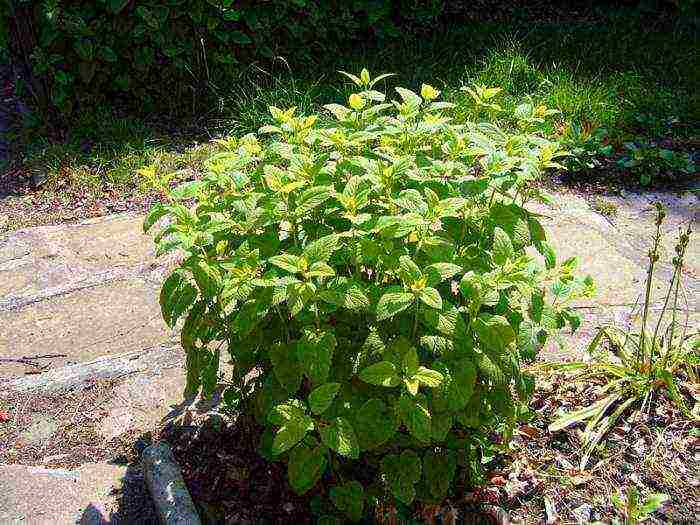 Seed sowing technology:
Seed sowing technology:
- Lemon balm seeds are soaked for several hours in a weak manganese solution. A simple procedure will ensure the disinfection of seeds, elimination of fungi.
- Seeds are sown in prepared containers 0.5 cm deep.
- Crops are carefully moistened with settled water at room temperature.
- The boxes with seeds are covered with plastic wrap or glass, forming a kind of greenhouse.
- After 2 weeks, the first sprouts of fragrant lemon balm appear.
- After the formation of 2 leaves, the crops are thinned out.
Using this technology, you can grow lemon balm on the windowsill.
Care of young plants
- Melissa prefers bright areas for growth. Provide her with such a place, and she will thank you with fragrant greens.
- Melissa is demanding on soil moisture. In the summer, in extreme heat, it must be watered abundantly. When the temperature drops, watering the plants is stopped.
- Melissa responds favorably to timely pruning. In addition, removing greenery from the bush will delay the flowering period.
- Melissa loves nutritious soil and is grateful for the fertilization. You can use both mineral and organic fertilizers.
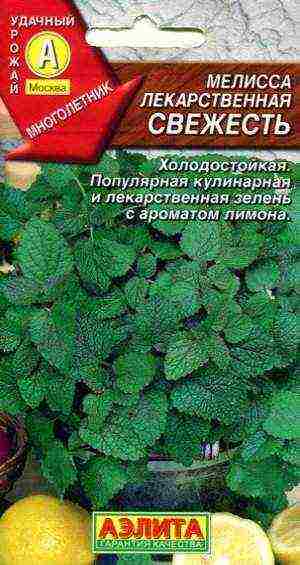 Melissa is an amazing plant that is very easy to grow in your own summer cottage. With just a little effort, you can achieve a high yield and enjoy the lemon-honey scent of an exquisite plant all year round.
Melissa is an amazing plant that is very easy to grow in your own summer cottage. With just a little effort, you can achieve a high yield and enjoy the lemon-honey scent of an exquisite plant all year round.
This unique beneficial plant can exist both outdoors and at home. If you follow the basic rules when caring for lemon balm, it will certainly delight you with abundant, fresh herbs.
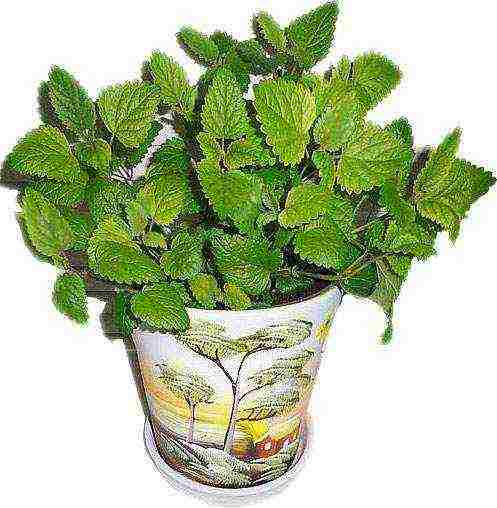
Melissa needs:
- fertile soil;
- a lot of light;
- sufficiently plentiful watering and spraying;
- systematic pruning;
- compliance with the temperature regime (18–20 degrees);
- regular feeding.
A plant can grow in one place three to four years... After that, it requires renewal and transplantation. To keep the bush healthy and strong for several years, it is recommended to plant it in the spring.
Growing lemon balm on a windowsill is not a troublesome business. It feels great in a pot, like any houseplant. True, the lemon balm bush will be low, but lush and thick, if it has enough light, moisture and nutrients, that is, competent care for the lemon balm is provided.
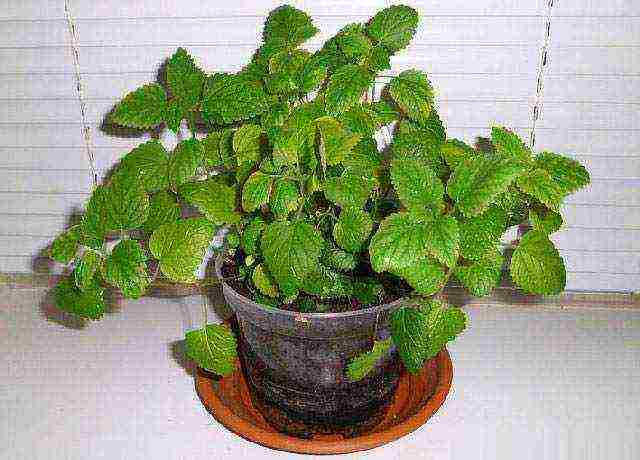
Melissa on the windowsill. Photo
In the winter season, growing lemon balm on a windowsill is not much different from usual. Lack of sunlight will reduce the amount of greenery, change its color, but not affect the quality.
Breeding new lemon balm bushes
Let's figure out how to grow lemon balm from seeds and how to increase the amount of a favorite plant in other ways. This can be done in different ways:
- dividing the bush;
- layering;
- stem cuttings;
- lemon balm from seeds.
Division an adult bush is produced in the spring. To do this, the root system is freed from the ground, cut into several parts with buds and planted in a permanent place.
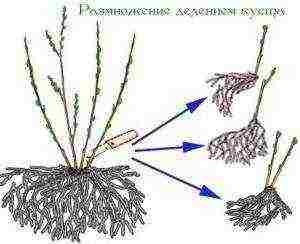
By using layering the plant is bred before flowering. Strong young shoots are bent to the ground with a staple, sprinkled with soil and await rooting. Two weeks later, a new bush is cut off with a pruner and transplanted into a pot or open ground to a new location.
Cuttings used at the first stage of breeding lemon balm, in the absence of an adult bush in the garden. The tops of the purchased plants are cut off and placed in a container with water.When roots form on the branches, they are planted in the ground and placed in a dark place. After the appearance of green shoots, the plants are taken out into the light.
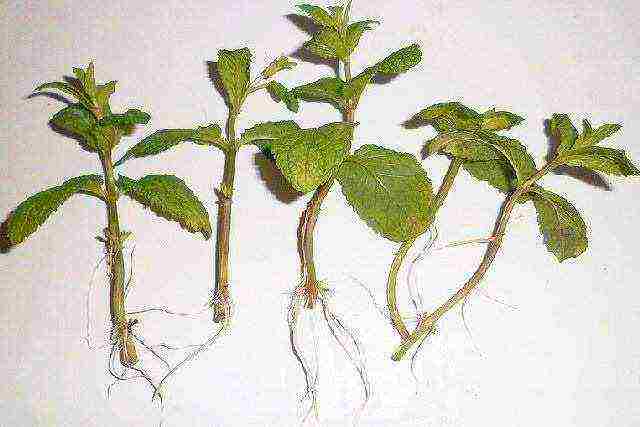
Growing lemon balm on a windowsill. Photo
How to grow lemon balm from seed? This process takes time and patience. But the quality of the green mass of lemon balm from seeds will be excellent.

To grow an adult bush, lemon balm seeds treated with potassium permanganate are sown into the ground to a depth of 1-2 centimeters, tightly covered and placed in a warm place.
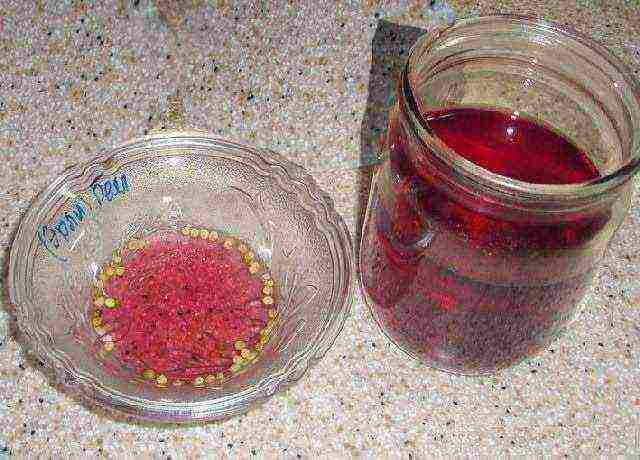
How to grow lemon balm. Photo
The emerging seedlings are transplanted into well-moistened drained soil.
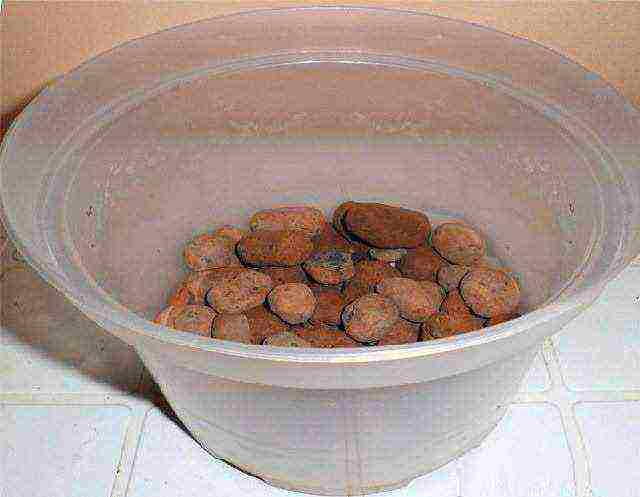
For this purpose, use a large container for a permanent place of plant life or small cups.
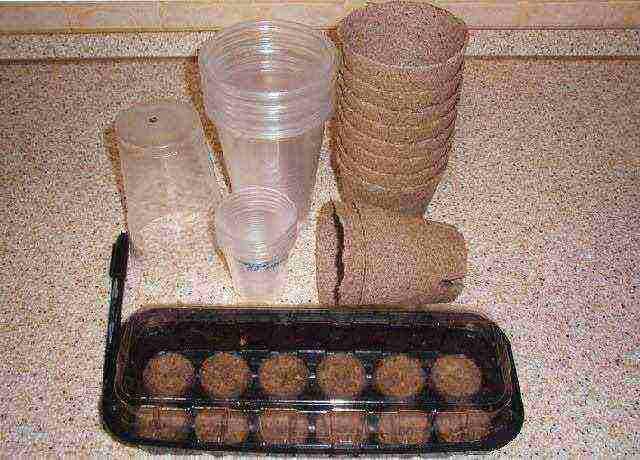
Dive shoots of lemon balm from seeds should be after the formation of two to four leaves. In about one and a half to two months, lemon balm from seeds will delight you with juicy fragrant greens.
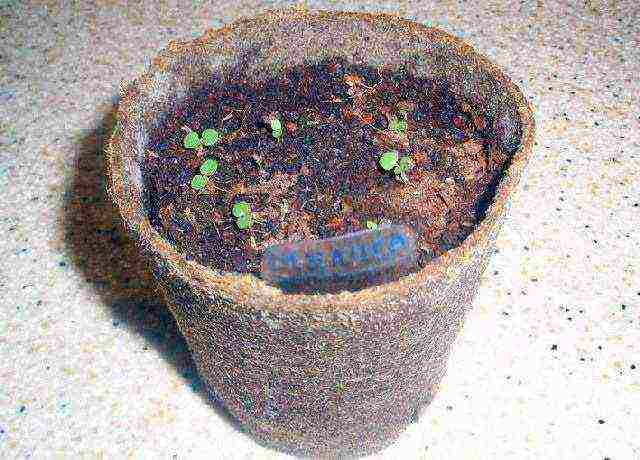


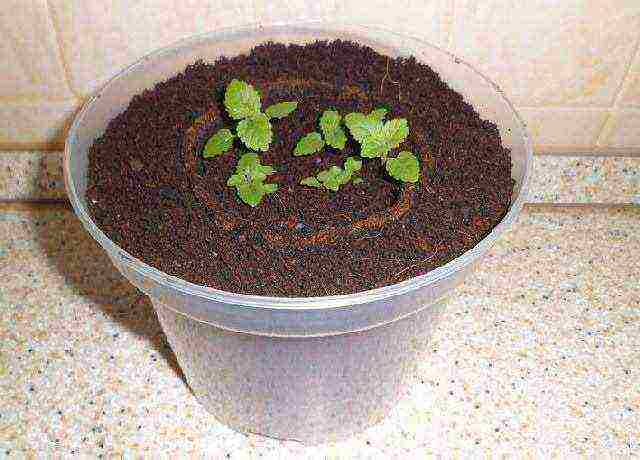
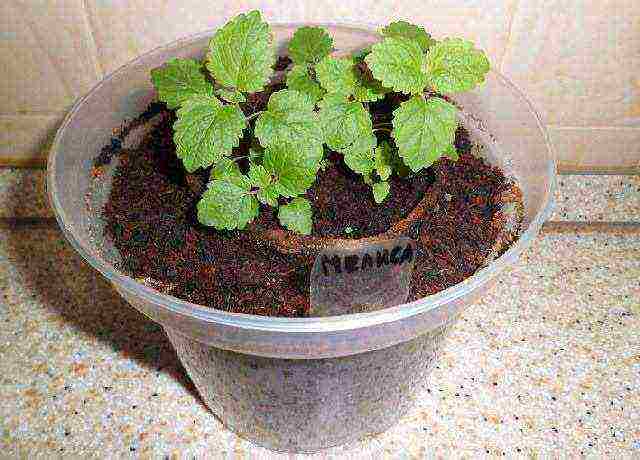
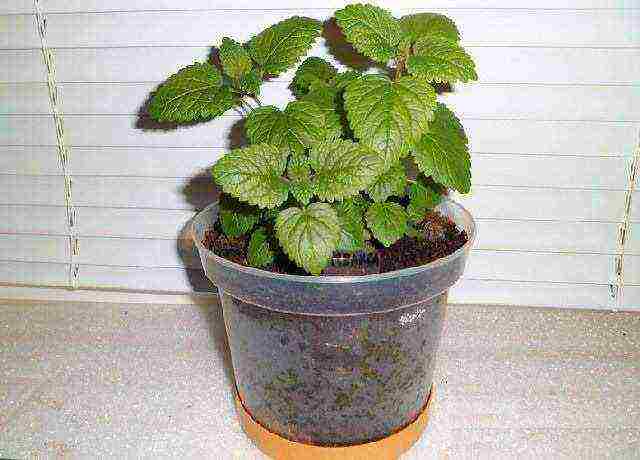
Melissa twins. What can be confused with
Melissa is often confused with other plants. These twins include:
- mint
- catnip
- snakehead moldavian.
Let's try to understand their differences.
Melissa is called "lemon mint" by many. In fact, these plants have nothing in common, except for external similarities. mint and medicinal perennial lemon balm.
The herb called "catnip"Can also be mistaken for lemon balm. The similar smell of these plants is misleading. In order not to confuse lemon balm with "catnip", you should get acquainted with the fundamental differences between them.
- The scent of lemon balm is delicate, reminiscent of the scent of lemon. The cattleman, on the other hand, smells rather harsh.
- White lemon balm flowers are located in the axils of the plant, and blue catnip inflorescences are in the upper part of the shoot.
- Rounded lemon balm leaves are even at the edges, and oblong catnip leaves are serrated.
- Lemon balm seeds are elongated, and catnip seeds are rounded.
Catnip grows everywhere. This herb is used for cooking and beauty products. It has medicinal properties: it improves appetite, cures cough, relieves worms.
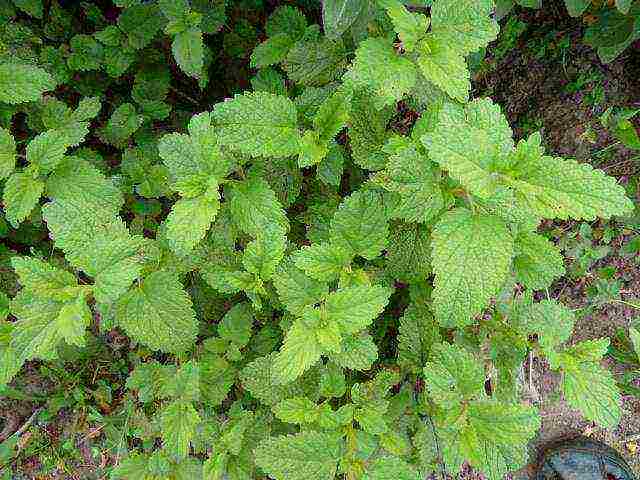
Moldavian snakehead or "Turkish lemon balm" - an annual plant found in Western Siberia and southern regions of Russia. The essential oils found in snakehead greens are reminiscent of the scent of lemon balm. But its smell is stronger and more pungent. Turkish lemon balm is a favorite of bees and an excellent sedative.
In order not to be mistaken and plant exactly what you need on your site, carefully study the inscription on the package with seeds when buying. For example, lemon balm in translation into Latin is called Melissa officinalis, catnip - Npeta catria, Moldavian snakehead - Dracocphalum moldavica.
Choosing the right sort of lemon balm
Several varieties of this extraordinary herb are known. Each variety of lemon balm has its own individual characteristics, differs in odor shades, leaf shape, bush size, flowering period. The most beloved varieties include several varieties:
- upright;
- Tsaritsinskaya;
- pearl;
- lime;
- lemon;
- freshness.
Melissa with the beautiful name "pure gold" is less common. This variety has an unusual light yellow color of leaves, covered with fine villi, shimmering in the light of sunlight.
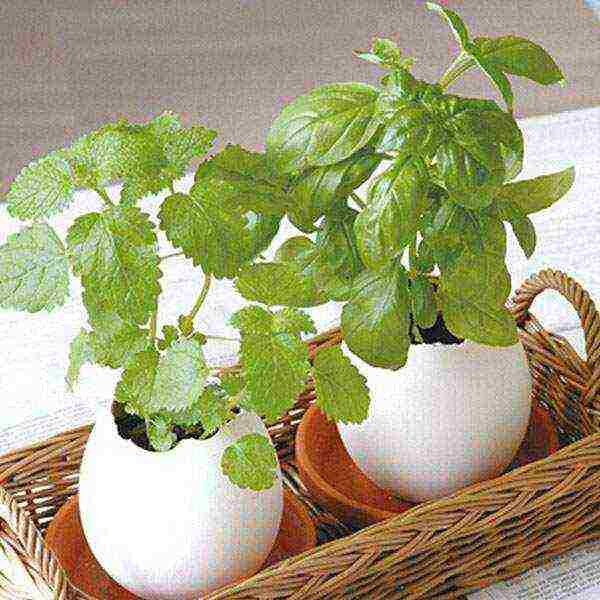
Variegated lemon balm gets its name from the dark, golden-streaked color of the leaves. The herb of this variety has a strong smell and unpretentious character. It can be grown both outdoors and at home.
How to use lemon balm
The range of uses for lemon grass or lemon balm is quite wide. This is due to its composition. Lemon balm leaves contain essential oils, organic acids.They are rich in vitamin "C", various microelements: zinc, copper, potassium, manganese, molybdenum, selenium.
This unpretentious herb has found wide application in medicine. It provides relief from a number of serious medical conditions:
- Saves from irritability and nervousness, restores sleep.
- Recommended for heart disease and vascular spasms.
- Treats cancer.
- Relieves headaches by improving blood circulation in the brain.
- Helps to normalize blood pressure.
- Helps to cope with colds: relieves sore throat, relieves cough.
- It is prescribed to improve digestion for people suffering from gastritis, pancreatitis, cholecystitis.
- Eliminates increased gas production, constipation, malfunctioning of the pancreas.
- It removes toxins from the body, having a diuretic and diaphoretic effect.
- Reduces toothache, disinfects the oral cavity, relieving inflammation.
- It is part of the dietary food that helps to lose weight.

Melissa is an irreplaceable remedy for maintaining the health of the female body. It relieves pain during menstruation, helps to cope with toxicosis during pregnancy, and stimulates milk production during breastfeeding.
Cook remedies from lemon balm is not difficult at all.
Can be done infusion from the green shoots of the plant. To do this, pour the chopped lemon balm leaves (20 grams) with boiling water (1 liter), seal tightly and infuse for twenty minutes.
To prepare decoction from this medicinal herb, boil two tablespoons in one liter of water for 15-20 minutes. Then remove from heat and let it brew for half an hour. Such a decoction is advised to drink four times a day, especially for patients with asthma and anemia.
Some people add lemon balm leaves to regular tea, mixing the drink with a little honey. It turns out to be an excellent prophylactic agent against viruses and colds.
If there are no lemon balm leaves at hand, you can successfully use the ready-made essential oil plants. A few drops in a bathtub or scented lamp will help you calm down and sound asleep.
Growing lemon balm in your summer cottage or on your windowsill, preparing a dried product, you provide yourself with a healthy drink that can be consumed all year round, strengthening health, prolonging youth and preserving beauty.
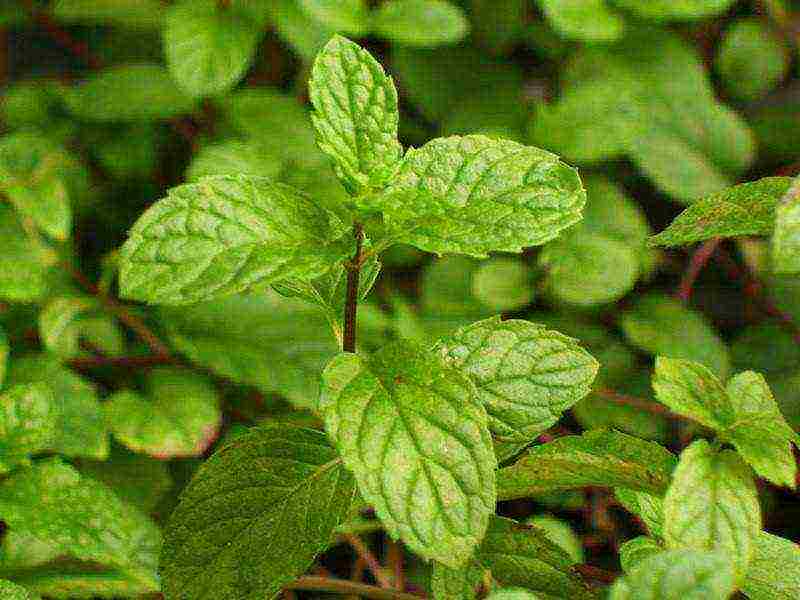
Melissa found her place in cooking. It is added to drinks and salads. As a seasoning used in the preparation of first courses, stewing fish, meat, mushrooms. Cabbage and cucumbers are fermented with it, various sauces and marinades are made. Due to its delicate aroma and spicy taste, lemon balm is analogous to black or allspice.
Lemon balm essential oil is widely used in cosmetology. It allows you to solve the problem of oily hair, destroys dandruff. It is enough to mix shampoo with a few drops of oil when washing your hair, and your hair will look great again. Thanks to its disinfectant and antibacterial properties, lemon balm oil cleanses the skin of acne and blackheads.
Lemon balm contraindications
Melissa is a useful plant and has almost no contraindications. And yet, some points related to its use are worth paying attention to:
- Do not abuse the use of infusion, broth, lemon balm tea for men. This can lead to an undesirable decrease in sexual activity.
- It is not recommended to drink drinks containing this herb before a responsible event, meeting, exam. Excessive calmness and insufficient response can adversely affect the outcome of the event.
- Treatment with lemon balm should be abandoned in case of individual intolerance or persistent hypotension.
In all other cases, lemon balm will benefit your body, prolonging and improving the quality of life.
Melissa on the windowsill. Video
On the garden plot, you want to grow unpretentious, multifunctional plants. Planting lemon balm (popularly - lemon mint) will allow you not only to evaluate its benefits for the body, but to get a decorative element for the flower bed and for the home.

Sowing technology
The first priority before sowing is soil preparation. You need to take 1 glass of vermicompost and 2 glasses of coconut fiber. Mix the ingredients thoroughly and add to this volume the recommended dose of the mineral fertilizer complex.
Sowing in containers or boxes is carried out in the second half of March.
- Several grooves need to be made in the soil, the distance between which is 4 - 6 cm.
- The seeds are small and should be mixed with a little sand to facilitate the sowing process.
- Distribute the mass along the grooves to a depth of 0.5 - 0.7 cm.
- Moisten the soil surface.
- Cover the container with glass or plastic.
- Put in a sunny, warm place.
After the emergence of seedlings, the box must be placed so that they receive a sufficient amount of light, but do not fall under the scorching rays. Watering should be carried out as the soil dries.
Seedlings appear 2–25 days after planting. After the appearance of several leaves, it is necessary to pick. This is done so that the seedlings do not stifle each other's growth and development. The distance between the stems should be at least 5 cm. If the sowing was carried out in a special container, then in one cell, where several seeds need to be planted at once, the weakest sprouts are removed.
Transplanting into open ground is carried out in the second half of May. To do this, you need to prepare a seat.
Melissa can grow both in a well-lit garden bed and in partial shade. When given enough light, the bush will exude an intense scent.
Advice
It should be borne in mind that this culture is perennial and grows from 4 to 9 years.
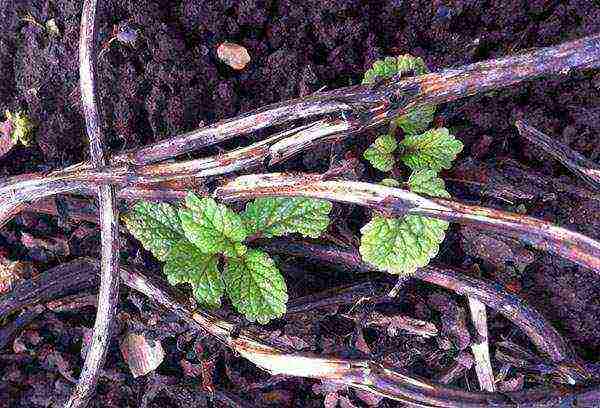
The soil should be loose, light and nutritious. Mellisa does not like acidic and moist soil. Excess water contributes to decay of the roots, so the place for the bush should be chosen dry, where moisture does not accumulate during precipitation. If the ground is heavy in the chosen place, then you need to add several buckets of fine sand.
After choosing a place, the soil must be fertilized. To do this, 1 sq. m. of soil is introduced:
- 200 g of wood ash (1 cup);
- 10 liter bucket of humus;
- Complex mineral fertilizer, the dosage is indicated on the package.
It should be planted in small trenches located at a distance of half a meter from each other. Each plant needs to be planted in a hole with an interval of 30–35 cm.
If you decide not to grow seedlings, but to plant seeds immediately in open ground, then you need to be prepared for poor germination, even careful care may not help. This can be influenced by several factors:
- low quality of planting material;
- heavy rainfall;
- "Clogging" of sprouts with weeds.
Landing is carried out in the 3rd week of May according to the following algorithm.
- Make holes at a distance of 50 - 60 cm from each other.
- Mix the grains with the sand.
- Deepen the mixture by half a centimeter.
- Sprinkle with peat or humus.
- Moisten the soil surface.
- Cover with foil.
Advice
To harden the seedlings and make them more hardy, you need to remove the film. First, for several hours, then for a whole daylight hours, and after the pick, the covering material is finally removed.
Lemon balm is propagated both by seeds and by layering and cuttings. If you already have an adult lemon bush, then planting it will be much easier: bend a few shoots to the ground, fix them and sprinkle them with earth. After a few weeks, the branches will take root and can be transplanted to a new location.
And in order to propagate by cuttings, it is enough to cut off in the garden from friends or buy a bunch of fresh herbs in the store, shorten the stems by 2 - 3 cm and put them in water. They do not require additional care, a root system appears in a week - and the cuttings are ready for planting in a flower bed.
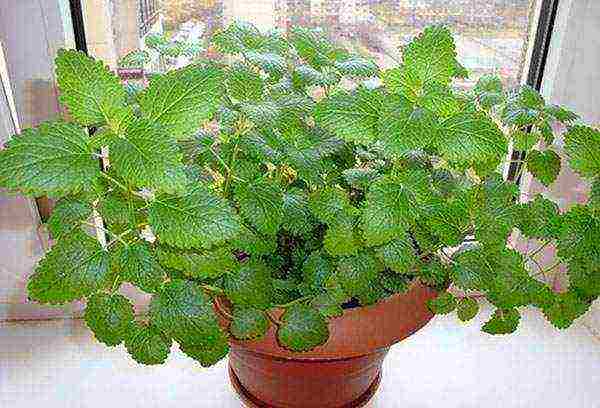
Growing at home
Melissa can be cultivated as a houseplant. Due to the small volume of the flower pot, it will not grow much, and pruning and constant maintenance will create a lush green bush.
Planting seedlings in pots at home is done in the spring, but you can sow seedlings and plant seedlings in the cold season, but growth will be slow, and the leaves will be light. During the spring and summer period, the bush is gaining strength and adapts to external conditions.
Seeds for growing a plant at home are sown in the same way as for a flower bed. Planting seedlings in pots is carried out after the appearance of 3 leaves. You need to act according to the following algorithm.
- Pick up a pot with a volume of 1.5 - 2 liters so that its walls are at least 15 cm.
- Provide good drainage. To do this, you can take pebbles or expanded clay.
- Pour the prepared soil and plant 2 or 3 sprouts in one container.
- Moisten the soil with a spray bottle.
- Put on the windowsill.
The peculiarity of caring for a plant at home is watering. Heating and dry air in the room negatively affect the appearance of lemon balm and its smell, therefore, it must additionally be humidified:
- water as the soil dries;
- spray every day.
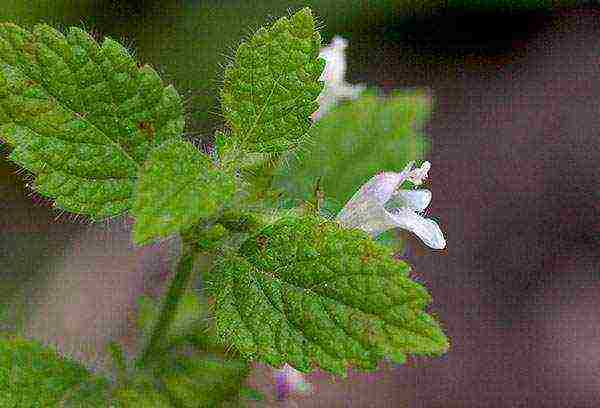
Care features
If you properly care for the bush in the first year of planting, then later the hassle with growing will be less.
Care is carried out in 4 main areas:
- watering;
- loosening;
- weeding;
- top dressing.
When the weather is hot, it is necessary to provide the lemon balm with sufficient watering. It is carried out 4 times a week, and on cloudy days, if there is no precipitation, you need to water it 2 times every 7 days.
Loosening is carried out after each watering and after rain to ensure good air permeability of the soil and prevent root rot due to excess moisture.
A flowerbed or a bed with seedlings should be weeded out as needed: the planted seedlings are not yet strong enough, and the grass can stifle its growth. In the 2nd and subsequent years of the life of this culture in your garden, small vegetation is allowed around mature bushes with a strong root system.
Top dressing is carried out at the beginning of the season, when the seedlings move to their permanent place of residence or the shoots that have sprouted on the street have reached 5–6 cm in height. Nitrogen fertilizer is applied to increase growth and strengthen the stem.
If you store the leaves for future use and cut them off as they grow, then after each pruning it is necessary to add a mineral complex, the dosage of which is indicated on the package by the manufacturer. Several times per season, you can add mulch or humus to the flower bed with the plant.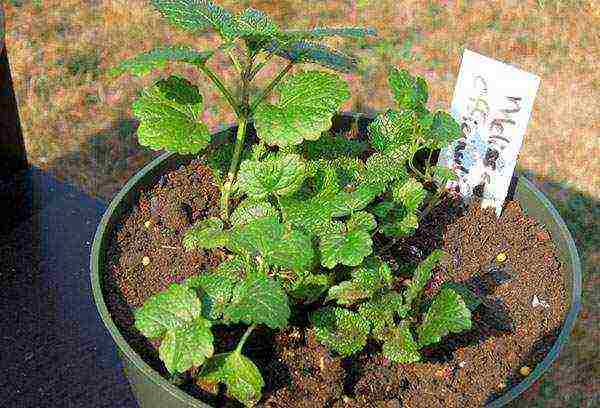
Melissa is a thermophilic culture. Although it can withstand negative temperatures, it is recommended to cover it for the winter:
- cut off the top, leaving 1–2 cm above the ground;
- loosen the ground and moisten a little;
- sprinkle fallen leaves on top.
So that the leaves are not crushed, and the mint continues to delight with the fresh scent of lemon, you need to divide the plant into several bushes every 3 years and plant them.
Despite all the usefulness of lemon balm, which is widespread in folk recipes, it does not require special care when growing; it can grow both in the country and at home on the windowsill.
By following these simple guidelines, you can grow a green bush with a delicious scent. Providing moderate watering and fertilizing the soil during the season, you can harvest the leaves several times.

